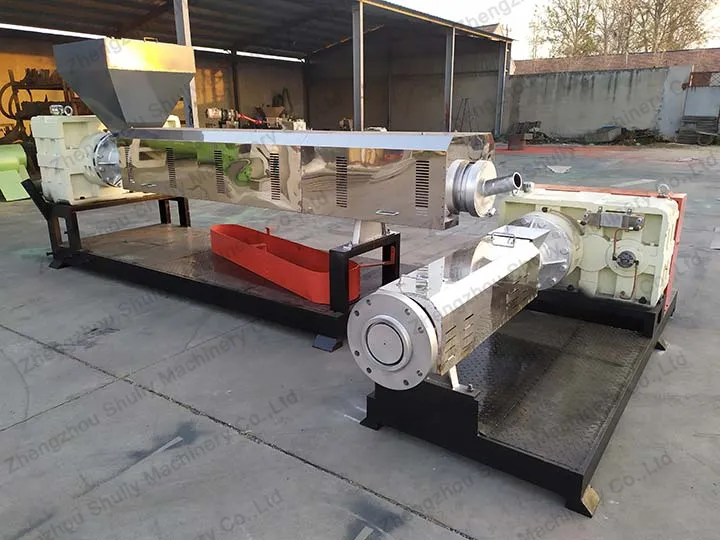Why is a plastic pelletizing machine called a mother baby extruder machine?
The plastic pelletizing machine plays an important role in the plastic recycling and processing industry and is often referred to as a mother baby extruder machine. Why is it called that? Let’s explain in detail.

Structure of the pelletizing machine
The pelletizing machine is usually composed of two parts, the main machine and the auxiliary machine. The main pelletizing machine is responsible for heating and melting the plastic material, and extruding it into granules using a screw. The auxiliary machine controls and assists in operations, such as temperature control and extrusion speed adjustment.
Relationship between main machine and auxiliary machine
There is a subordinate relationship between the main machine and the auxiliary machine in the pelletizing machine, with the main machine being the “mother machine” and the auxiliary machine being the “child machine,” hence the name mother baby extruder machine.
Functional coordination
The main machine and the auxiliary machine cooperate during the work process to complete the processing of plastic granules. The main machine melts the plastic material and extrudes it through the screw, while the auxiliary machine controls and assists in operations to ensure the smooth progress of the entire processing process.
Improving pelletizing efficiency
The design of the mother and child machine can effectively improve production efficiency, making the production of plastic granules more stable and efficient.
In conclusion, the term mother baby extruder machine, as a common name for a plastic pelletizing machine, comes from the subordinate relationship between the main machine and the auxiliary machine. The main machine is the “mother machine,” and the auxiliary machine is the “child machine.” Together, they complete the processing process of plastic granules, improve production efficiency, and are one of the important equipment in the plastic processing industry.
